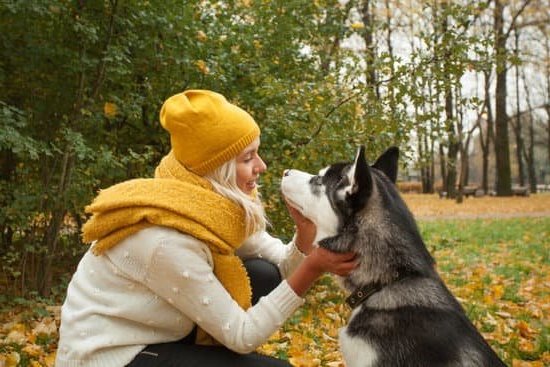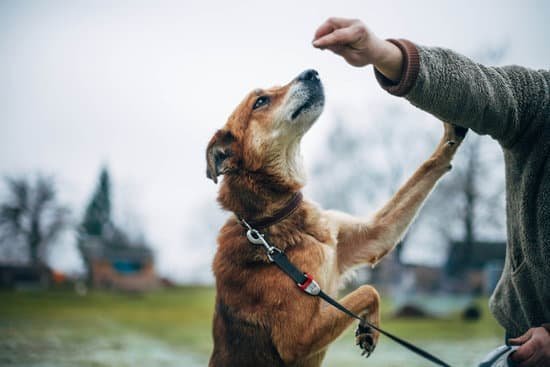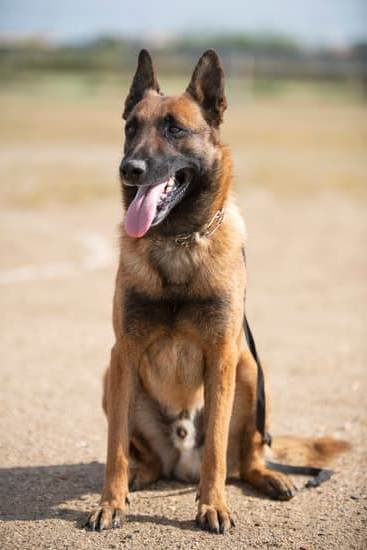Crate training is an essential skill for every dog owner, regardless of their pet’s age. However, when it comes to senior dogs, crate training takes on added importance. In this article, we will explore the ins and outs of crate training for older dogs, including its benefits and practical tips for success.
As dogs age, they may experience various physical and cognitive changes that can make them more vulnerable or in need of extra care. Crate training can provide a safe and comfortable space where senior dogs can rest, relax, and feel secure. Additionally, crate training can aid in housebreaking efforts by teaching older dogs bladder control and helping establish a daily routine.
One significant advantage of crate training for senior dogs is its ability to reduce anxiety. Dogs may develop anxiety as they age due to factors such as decreased mobility or changes in their environment. A properly introduced and tailored crate can become a peaceful retreat for your senior dog when they are feeling stressed or overwhelmed. Moreover, crate training promotes positive behavior by giving dogs a designated area to calm down and avoid engaging in destructive habits.
In the following sections, we will delve into the benefits of crate training for senior dogs in more detail. We will also provide guidance on choosing the right crate size and type specifically suited for elderly canines. Whether you are new to crate training or have experience with younger pups, this article will equip you with the knowledge needed to successfully train your senior dog and create a harmonious living environment for both of you.
Benefits of Crate Training for Senior Dogs
Providing a Safe and Comfortable Space
Crate training is especially beneficial for senior dogs because it provides them with a safe and comfortable space of their own. As dogs age, they may become more susceptible to various health issues or physical limitations. Having a crate that is properly sized and equipped with soft bedding can offer senior dogs a cozy spot where they can rest without putting strain on their joints or muscles.
Additionally, older dogs may find comfort in having their own den-like area where they can relax and feel secure. This sense of security is particularly important for senior dogs who may experience anxiety or discomfort due to changes in their surroundings.
Aiding in Housebreaking
Another advantage of crate training for senior dogs is its effectiveness in aiding housebreaking efforts. Senior dogs may have difficulty controlling their bladder or bowel movements, making accidents inside the house more common. By using a crate during the housebreaking process, pet owners can establish a routine that prompts the dog to eliminate outside in an appropriate area.
Dogs generally do not want to soil their sleeping area, so confinement within the crate can encourage them to hold their bodily functions until they are released from the crate and taken outside. Consistency is key when using this method, as it allows senior dogs to develop good bathroom habits gradually.
Reducing Anxiety and Promoting Positive Behavior
Crate training has been found to be effective in reducing anxiety and promoting positive behavior in senior dogs. Many older dogs may experience separation anxiety or general anxiety due to age-related issues or previous experiences. The enclosed space of a crate provides these dogs with a sense of security by giving them boundaries and limits, which can help alleviate anxiety symptoms.
Crate training also promotes positive behavior by providing structure and teaching self-control to senior dogs. When properly introduced and utilized as part of a routine, crates can serve as peaceful retreats where senior dogs can find solace, reducing the likelihood of destructive behaviors or excessive barking that may occur when they are left unsupervised.
Choosing the Right Crate for Your Senior Dog
When it comes to crate training your senior dog, choosing the right crate is essential. The crate should provide a comfortable and secure space for your dog while accommodating their size and specific needs. Here are some important factors to consider when selecting a crate for your senior dog.
Firstly, you need to determine the appropriate size of the crate. Measure your senior dog from their nose to the base of their tail to determine the length they require. The crate should be long enough for them to comfortably stand up, turn around, and lie down without feeling cramped. Keep in mind that older dogs may have arthritis or joint issues, so providing sufficient space is crucial for their comfort.
The type of crate is another aspect to consider. There are generally two main types: wire crates or plastic crates. Wire crates offer more visibility and ventilation, allowing your senior dog to see what’s happening around them. On the other hand, plastic crates can provide a more den-like environment that feels safe and cozy. Consider your senior dog’s preferences and behavior when deciding between these options.
Additionally, some senior dogs may benefit from crates with certain features such as removable doors or easy access points if they have mobility challenges. Others may prefer crates with higher walls that offer a sense of security. Take into account any special needs or preferences your senior dog has when choosing their crate.
Overall, finding the right crate for your senior dog requires careful consideration of their size, breed characteristics, and individual comfort preferences. Investing time in choosing a suitable crate will increase the likelihood of successful crate training and ensure that your senior dog has a safe and comfortable space they can call their own during this stage of life.
Acclimating Your Senior Dog to the Crate
Step 1: Introduce the Crate Slowly
When introducing the crate to your senior dog, it’s important to take things slow and allow them to adjust at their own pace. Start by placing the crate in an area of your home where your dog spends most of their time. Keep the door open and allow your dog to explore the crate on their own terms. Encourage them with praise and treats when they show any interest in the crate.
Step 2: Make it a Positive Experience
To help your senior dog associate the crate with positive experiences, start by tossing small treats or toys near or inside the crate, gradually moving them closer to encourage your dog to enter willingly. Use a cheerful tone of voice and offer words of encouragement as they approach and enter the crate. It’s important never to force or push your dog into the crate, as this can create negative associations.
Step 3: Incorporate Meals and Treats
Once your senior dog is comfortable entering the crate voluntarily, you can begin feeding meals inside the crate. Place their food bowl near the back of the crate or place treats throughout it, rewarding them for spending time inside. This helps create a positive association with being in the crate while also providing them with a pleasant experience.
Step 4: Gradually Close and Secure the Door
After several successful interactions with the open door, start closing it briefly while your senior dog is inside eating or enjoying treats. Initially, keep it closed for just a few seconds before opening it again. Gradually increase this duration over time until your dog feels more comfortable being enclosed in the crate for longer periods.
Step 5: Add Comforting Elements
Make sure that your senior dog feels safe and comfortable in their new environment by adding soft bedding or blankets to the floor of the crate. This will provide a cozy and inviting space for them to rest. Consider using bedding with familiar scents, like a blanket they often use or an old t-shirt that carries your scent, as this can help ease anxiety and make them feel more secure.
Step 6: Utilize Positive Reinforcement
Throughout the acclimation process, it’s crucial to employ positive reinforcement techniques. Praise your senior dog when they willingly enter or stay in the crate, and offer plenty of verbal praise, pats, and treats for good behavior. By associating positive experiences with being inside the crate, your dog will gradually develop a more positive attitude towards it.
Remember to be patient during this process as each dog may require different amounts of time to feel fully comfortable in their crate. By following these step-by-step instructions and providing plenty of encouragement and positive reinforcement, you’ll help your senior dog successfully acclimate to their new crate and create a safe haven for them to enjoy.
Setting Up the Crate for Success
Creating a comfortable and inviting space within the crate is crucial to the success of crate training for senior dogs. By making the environment cozy and appealing, you can help your dog feel more at ease and increase their willingness to spend time in the crate. Here are some important tips on how to set up the crate for success:
Firstly, make sure to provide a soft and comfortable bedding for your senior dog. Opt for materials that are gentle on their joints, such as memory foam or orthopedic beds. Placing a thick blanket or cushion inside the crate can add an extra layer of comfort. Additionally, consider elevating the bed slightly off the floor of the crate using a platform or risers to provide better insulation from cold surfaces.
Secondly, ensure proper ventilation within the crate by choosing a crate with sufficient airflow. Look for crates with mesh sides or wire construction that allows air to circulate freely. Adequate ventilation is essential for maintaining a comfortable temperature inside the crate and preventing any buildup of odors.
Incorporating familiar scents and sounds into the crate can also help your senior dog feel more secure. Consider placing an item with your scent, such as an unwashed t-shirt or blanket, inside their crate. This can create a sense of familiarity and reassurance for your furry friend. Furthermore, you may also play calming music or white noise near the crate to mask outside noises and promote relaxation.
By following these tips and creating an inviting and cozy space in your senior dog’s crate, you can significantly contribute to their comfort during training sessions. Remember that every dog is unique, so experiment with different bedding materials, scents, and sounds to find what works best for your canine companion.
Establishing a Crating Routine
Once you have introduced your senior dog to the crate and they have become comfortable with it, it is essential to establish a consistent crating routine. This routine not only helps your senior dog feel secure but also assists in reinforcing positive behaviors associated with the crate. Here are some guidelines for creating a successful crating routine for your senior dog:
- Determine appropriate crate time: It is important to consider your senior dog’s age, health condition, and bladder control when deciding how long they can comfortably stay in the crate. As a general rule of thumb, adult dogs can typically hold their bladder for approximately four hours, while older dogs may need more frequent bathroom breaks. If possible, try to schedule bathroom breaks at regular intervals throughout the day to ensure that your senior dog remains comfortable.
- Gradually extend crate time: Initially, begin by keeping your senior dog in the crate for short periods of time, gradually increasing the duration as they become more accustomed to it. Start with just a few minutes and gradually increase by five or ten-minute increments over several days or weeks. By gradually extending the amount of time spent in the crate, you can help prevent anxiety or stress associated with being confined.
- Provide mental and physical stimulation outside the crate: While crating is necessary at times, it is crucial to provide ample mental and physical stimulation outside of the crate to keep your senior dog mentally engaged and physically fit. Engage them in activities such as puzzles, gentle play sessions or walks before and after crating periods to release energy and promote positive behavior.
| Guidelines | Actions |
|---|---|
| Determine appropriate crate time | Consider senior dog’s age, health condition, and bladder control. |
| Gradually extend crate time | Increase duration by five or ten-minute increments over several days or weeks. |
| Provide mental and physical stimulation outside the crate | Engage in activities such as puzzles, gentle play sessions, or walks before and after crating. |
By following these guidelines, you can create a consistent and effective crating routine for your senior dog that promotes their well-being while still ensuring they have ample opportunities for exercise and mental stimulation. Remember to be patient and consistent in your approach, using positive reinforcement techniques to help your senior dog view their crate as a safe and comforting space.
Common Challenges and Troubleshooting
Crate training can sometimes present challenges when it comes to senior dogs. These challenges may include separation anxiety, fearfulness, or resistance to being crated. However, with the right strategies and solutions, these problems can be overcome.
Separation Anxiety: Many senior dogs experience separation anxiety when crated, especially if they have not been crate trained before. They may become anxious or stressed when left alone in the crate and may exhibit behaviors such as excessive barking, whining, or attempts to escape. To address separation anxiety:
- Start by making the crate a positive and comforting place for your senior dog. Use positive reinforcement techniques such as treats and praise to create a positive association with the crate.
- Gradually increase the time your dog spends in the crate. Begin with short periods of time and gradually extend the duration. This will help your senior dog feel more comfortable being alone in the crate.
- Provide mental stimulation for your dog while they are in the crate. Give them puzzle toys or chew toys to keep them occupied and distracted from their anxiety.
- Avoid punishment or negative reinforcement if your dog shows signs of anxiety while crated. This can worsen their fear and anxiety. Instead, focus on rewarding calm behavior and gradually increasing their tolerance for being crated.
Fearfulness: Some senior dogs may be fearful of crates due to past negative associations or experiences. In order to address this fearfulness:
- Take a gradual approach to introduce your senior dog to the crate. Start by simply having the crate available in a room without expecting your dog to enter it initially.
- Spend time near the crate with your dog, offering treats and praise for any signs of curiosity towards the crate.
- Create positive associations by feeding meals near or inside the open crate so that your senior dog can associate positive experiences with the crate.
- Gradually increase the proximity and time spent near the crate, ensuring that your senior dog feels comfortable and safe.
Resistance to Being Crated: Some senior dogs may resist being crated initially due to unfamiliarity or discomfort. Here are some strategies to help overcome this resistance:
- Make sure that the crate is properly sized for your senior dog. It should be large enough for them to stand, turn around, and lie down comfortably.
- Introduce the crate gradually, starting with short periods of time and gradually increasing the duration. This will allow your senior dog to get used to being in the crate without feeling overwhelmed.
- Use positive reinforcement techniques such as treats, praise, and toys to create a positive association with the crate. Reward your dog for entering and staying in the crate voluntarily.
- Add familiar scents or sounds inside the crate, such as a blanket with your scent or a ticking clock, to make it more inviting and comforting for your senior dog.
By understanding and addressing these common challenges during crate training, you can help your senior dog become more comfortable and relaxed in their crate. Remember to be patient and consistent in your training approach, using positive reinforcement techniques to create a positive association with the crate. With time and effort, most senior dogs can successfully adapt to being crated.
Gradual Independence
Gradual Independence: Explain how to gradually increase your senior dog’s independence from the crate, transitioning to longer periods outside the crate and eventually allowing them to roam freely with certain boundaries.
After successfully acclimating your senior dog to the crate and establishing a consistent crating routine, it is important to gradually increase their independence from the crate. This process involves transitioning your dog to longer periods outside the crate and eventually allowing them to roam freely with certain boundaries. By following these steps, you can ensure a smooth transition for your senior dog and promote their overall freedom and well-being.
- Extend Outside Crate Time Slowly: Begin by gradually increasing the amount of time your senior dog spends outside the crate. Start with short intervals, such as fifteen minutes, and slowly extend those periods over time. Observe how your dog responds and adjust accordingly. If they show signs of anxiety or discomfort, shorten the outside-the-crate time until they become more comfortable.
- Monitor Behavior: Pay close attention to your senior dog’s behavior when they are out of the crate for an extended period. Look for signs of stress or anxiety, such as excessive panting, pacing, or whining. Additionally, watch for any destructive behavior or accidents that may suggest they are not ready for increased freedom yet.
- Gradually Expand Boundaries: Once your senior dog is comfortable spending longer periods outside the crate without exhibiting signs of anxiety or destructive behavior, it’s time to expand their boundaries within your home. Start by confining them to a small area with baby gates or exercise pens before giving them access to larger areas one at a time. This gradual expansion will help prevent overwhelming them and reduce any potential accidents or mishaps.
It is essential to remember that each senior dog is unique, so the timing for transitioning them out of the crate will vary depending on their individual needs and comfort levels. Some dogs may adapt quickly, while others may require more time and support. Patience and consistency are key during this process, as is providing plenty of mental and physical stimulation outside the crate to help ease the transition.
Remember to always prioritize your senior dog’s safety and well-being when granting them increased independence. Be mindful of any hazards or potential dangers in your home, such as toxic substances or steep stairs, and take steps to block off those areas or make them inaccessible to your dog. By gradually allowing your senior dog more freedom with appropriate boundaries, you can create a safe and secure environment for them to enjoy their newfound independence.
| Step | Description |
|---|---|
| 1. Extend Outside Crate Time Slowly | Gradually increase the amount of time your senior dog spends outside the crate. |
| 2. Monitor Behavior | Closely observe your senior dog’s behavior when they are out of the crate for an extended period. |
| 3. Gradually Expand Boundaries | Confine your senior dog to a small area with baby gates or exercise pens before giving them access to larger areas. |
Important Considerations and Safety Tips
When it comes to crate training senior dogs, it’s essential to prioritize their safety and comfort. Here are some important considerations and safety tips to keep in mind as you embark on this training journey:
- Avoid Excessive Crate Time: While crate training can be beneficial, it’s crucial not to leave your senior dog confined for extended periods. Older dogs may have limited mobility or bladder control, making it uncomfortable for them to spend too much time in a crate. Aim for gradual increases in crate time, ensuring that your dog has plenty of opportunities for exercise, mental stimulation, and bathroom breaks outside the crate.
- Ensure Proper Ventilation and Comfort: Good ventilation is crucial for your senior dog’s well-being while crated. Make sure the crate allows proper airflow by choosing a design with adequate vents or wire construction. Additionally, select comfortable bedding that provides support and cushioning for your dog’s joints. Orthopedic beds can be particularly helpful for older dogs with arthritis or other joint issues.
- Regularly Check the Crate for Wear and Tear: Over time, crates can experience wear and tear that may compromise your senior dog’s safety. It’s important to regularly inspect the crate for any sharp edges, loose wires, or damaged parts that could potentially harm your furry friend. Replace any worn-out crates or parts promptly to ensure a secure environment.
To further enhance safety during the crate training process, here are a few additional tips:
- Remove collars before placing your senior dog in the crate to prevent them from getting stuck or tangled.
- Choose a quiet location for the crate away from noisy areas or high foot traffic.
- Never use the crate as punishment; it should always represent a positive space.
- Always supervise your senior dog when they are outside of their crate to prevent accidental injuries or destructive behavior.
By following these important considerations and safety tips, you can create a secure and comfortable environment for your senior dog during crate training. Remember, the ultimate goal is to provide them with a safe and cozy space that they can view as their own den, promoting their overall well-being and positive behavior.
Conclusion
In conclusion, crate training can be a valuable tool for senior dogs. By providing a safe and comfortable space, aiding in housebreaking, reducing anxiety, and promoting positive behavior, crate training can greatly enhance the quality of life for older dogs.
It is important to choose the right crate size and type for your senior dog, taking into consideration their size, breed, and comfort preferences. Gradually introducing the crate to your senior dog and using positive reinforcement techniques can help them become acclimated to the new environment.
When setting up the crate for success, make sure to arrange it in a way that is inviting and cozy for your senior dog. This may include placing comfortable bedding, ensuring good ventilation, or adding familiar scents or sounds. Creating a consistent routine for crating your senior dog is also crucial. Start by crating them for short periods of time and gradually extend the duration as they become more comfortable.
It is important to address any challenges that may arise during crate training. Issues such as separation anxiety or resistance to being crated can be overcome with patience and proper strategies. As your senior dog becomes more independent from the crate, you can start allowing them longer periods outside of it and eventually allow them to roam freely within certain boundaries.
Frequently Asked Questions
Can an older dog be crate trained?
Yes, an older dog can still be crate trained. While it may take a bit more time and patience compared to training a younger puppy, it is definitely possible.
Older dogs may have already developed certain habits or preferences, so crate training allows them to learn a new routine and become comfortable in a confined space. The key is to introduce the crate gradually and allow the dog to associate it with positive experiences, such as treats or meals inside the crate.
How long does it take to crate train a senior dog?
The time required to crate train a senior dog can vary depending on each individual dog’s personality, previous experiences, and overall adaptability. Some older dogs may quickly adjust to spending time in their crates while others may take longer.
It is important for pet owners to be patient during the training process and not rush the dog’s progress. Consistency and positive reinforcement are crucial when crate training senior dogs, so it is advisable to establish a consistent daily routine that includes regular crate times.
Is it OK to crate a senior dog at night?
Crate training can certainly be acceptable for senior dogs during nighttime sleep if implemented correctly. Many older dogs appreciate having their own cozy den-like space where they can feel secure and relaxed throughout the night. However, before crating a senior dog at night, it is essential to consider their specific needs and preferences. For example, some senior dogs may have medical conditions or mobility issues requiring easy access to eliminate during the night.
It is crucial to ensure the crate is appropriately sized and comfortable, providing them with enough room to stand up, turn around comfortably, and lie down without restriction. Additionally, ensuring that the dog has had ample exercise before bedtime helps prevent excessive restlessness or discomfort during crating periods at night. Regularly evaluating their overall comfort level in the crate will help determine if crating at night continues to be appropriate for them.

Welcome to the blog! I am a professional dog trainer and have been working with dogs for many years. In this blog, I will be discussing various topics related to dog training, including tips, tricks, and advice. I hope you find this information helpful and informative. Thanks for reading!





